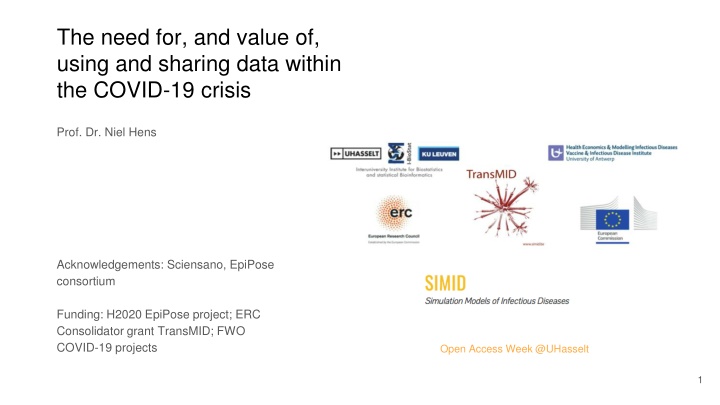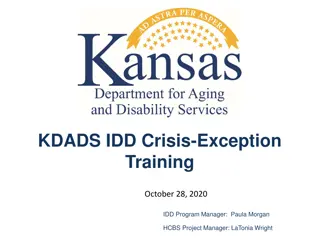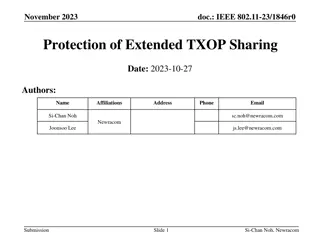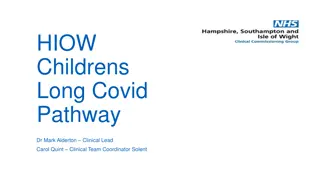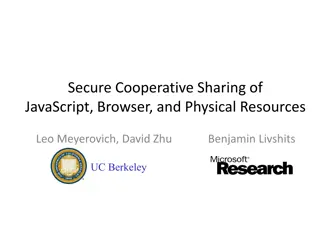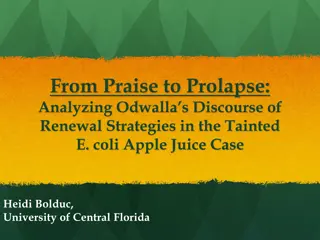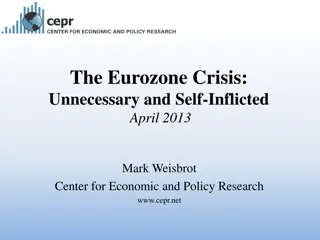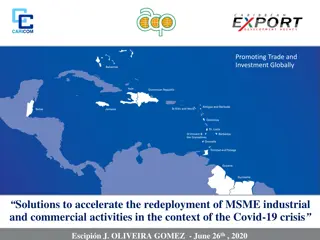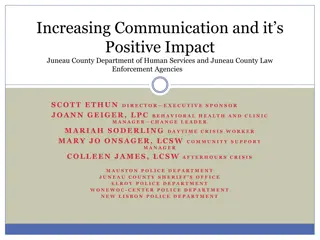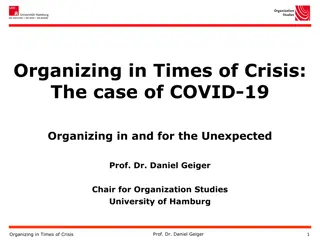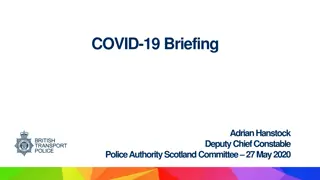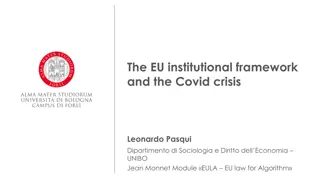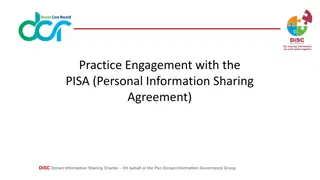Utilizing and Sharing Data in the COVID-19 Crisis
Exploring the significance of data utilization and sharing during the COVID-19 crisis, this content discusses infectious disease data, the Belgian pandemic, international open data initiatives, estimating COVID-19 generation intervals, and various data collection initiatives. The narrative sheds light on the value of data in understanding and combating the pandemic.
Download Presentation

Please find below an Image/Link to download the presentation.
The content on the website is provided AS IS for your information and personal use only. It may not be sold, licensed, or shared on other websites without obtaining consent from the author.If you encounter any issues during the download, it is possible that the publisher has removed the file from their server.
You are allowed to download the files provided on this website for personal or commercial use, subject to the condition that they are used lawfully. All files are the property of their respective owners.
The content on the website is provided AS IS for your information and personal use only. It may not be sold, licensed, or shared on other websites without obtaining consent from the author.
E N D
Presentation Transcript
The need for, and value of, using and sharing data within the COVID-19 crisis Prof. Dr. Niel Hens Acknowledgements: Sciensano, EpiPose consortium Funding: H2020 EpiPose project; ERC Consolidator grant TransMID; FWO COVID-19 projects Open Access Week @UHasselt 1
Infectious disease data Difficulties interdepencies incomplete data Observational studies bias association not causation Scientific principles conjecture versus refutation Bradford Hill criteria confidence Robert Koch & microbiology Held et al. (2019) 2 Becker (1989)
The Belgian COVID-19 pandemic Data collected by Sciensano: (open data after criticism in the media) Confirmed cases data Hospital data Data about deaths Deaths First wave Severe cases (hospitalized) Early May Late October Early June Federal task force: Data Against Corona: Barometer data Mobile phone data Weather data Absenteism data Mild cases Asymptomatic / pre- symptomatic (PCR+ only, detected) 3
International open data initiatives Open data initiatives on incidence etc John Hopkins (https://coronavirus.jhu.edu/map.html) Our world in data (https://ourworldindata.org/) Data from transmission clusters superspreading events: google spreadsheet transmission data: Singapore, Tianjin (China), Data interventions Oxford government response tracker 4
Estimating the generation interval for COVID-19 based on symptom onset data Tapiwa Ganyani, C cile Kremer, Dongxuan Chen, Andrea Torneri, Christel Faes, Jacco Wallinga, and Niel Hens Kremer et al. (2020): letter to editor to clarify issues with estimating the generation interval as raised by Bacallado et al. (2020) Hui-Xian et al. (in revision): analysis of Singapore data from Jan - April 2020 Torneri et al. (in revision): biased estiamtes in case of intervention measures Publication: Ganyani Tapiwa, Kremer C cile, Chen Dongxuan, Torneri Andrea, Faes Christel, Wallinga Jacco, Hens Niel. Estimating the generation interval for coronavirus disease (COVID-19) based on symptom onset data, March 2020. Euro Surveill. 2020;25(17):pii=2000257. https://doi.org/10.2807/1560- 7917.ES.2020.25.17.2000257
Own data collection initiatives Social contact data collection initiative (ERC TransMID) Large Corona Study (UAntwerpen UHasselt KU Leuven ULB) CoMIX study (H2020 EpiPose) Serological data collections (Handgift UAntwerpen) 6
SOCRATES: An online tool leveraging a social contact data sharing initiative to assess mitigation strategies for COVID-19 Lander Willem, Thang Van Hoang, Sebastian Funk, Pietro Coletti, Philippe Beutels, Niel Hens Publication: Medrxiv & BMC Research Notes (2020) www.socialcontactdata.org
CoMix: comparing mixing patterns in the Belgian population during and after lockdown Pietro Coletti, James Wambua, Amy Gimma, Lander Willem, Sarah Vercruysse, Bieke Vanhoutte, Christopher I Jarvis, Kevin van Zandvoort, John Edmunds, Philippe Beutels, Niel Hens Publication: Medrxiv & In revision (2020) www.socialcontactdata.org
Design and analysis of SARS-CoV-2 serological surveys Sereina Herzog, Steven Abrams, Niel Hens Ine Wouters, Jessie De Bie, Esra Ekinci, Heidi Theeten, Pierre Van Damme Publication: Medrxiv & In revision (2020)
Serosurvey SARS-CoV-2 aim & planning Aim: Estimating seroprevalence of COVID-19 in Belgium from residual sera collected during routine laboratory testing Collections: Nr Collection period Total number samples (asked for) Total number samples (collected) 1) 30/03 - 05/04 4000 3910 2) 20/04 - 26/04 3000 3397 3) 18/05 - 25/05 3000 3242 4) 01/06 - 07/06 3000 2960 5) 29/06 - 04/07 2000 3023 6) 07/09 - 12/09 3000 3047 7) 17/09 - 12/10 3000 -
Serosurvey SARS-CoV-2 results Figure legend Weighted seroprevalence (A, B, C) Weighted seroincidence (D, E, F) - overall (panel A+D), - by 10-year age bands (panel B+E), - by gender (panel D+F) (updated 28.09.2020)
Closing remarks Conclusion Discussion Extremely valuable Open data Need to remove hurdles or expedite processes in a crisis On preprints Open software New initiative Ethics & privacy Infectieradar.be flawed reasoning: not sharing because of possible misinterpretation 16
